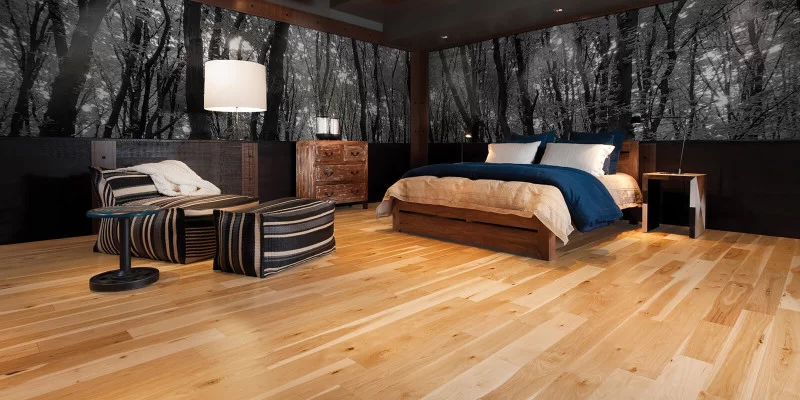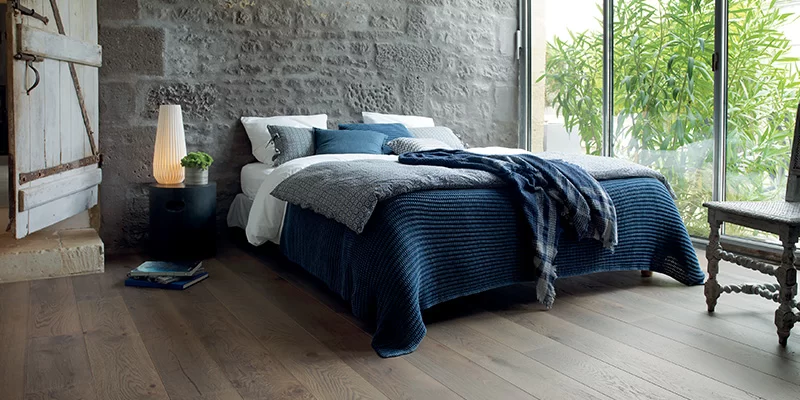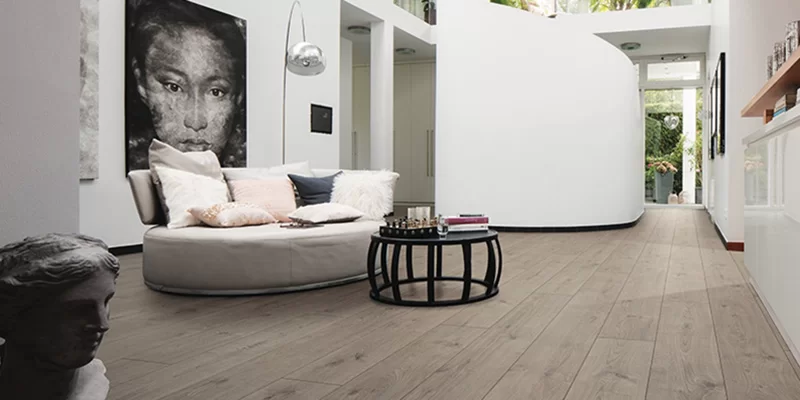
Compare parquet and engineered board
Our experts — professionals in the field of construction and repair have analyzed the properties and features of two similar flooring materials — parquet and engineered boards, made a comparative analysis of their advantages and disadvantages, which will help you make the right choice.
parquet board

A high-tech product that is made by gluing two or three layers of wood materials. The lower, as well as the middle layer is made of coniferous wood, the upper, front layer is made of precious wood. Each layer is positioned so that the wood fibers are perpendicular to the fibers of the other layer. This gives the parquet strength and resistance to changes in humidity and temperature extremes. The thickness of the top layer can vary within 0.5-6 mm with a total thickness of up to 22 mm.
Parquet dimensions according to the standard: length within 1.8-2.5 m, width 140-200 mm, thickness from 14 to 22 mm.
According to the norms of the State Standard, the parquet board is classified into three types:
-
type PD-1 — has a base of a single layer of wood, which is recruited from individual slats, formed into rectangles or squares, which are located perpendicular to each other. Long slats are passed along the longitudinal edges of the base;
-
type PD-2 — with a base of one layer of long rails arranged along the length;
-
type PD-3 — with a two-layer base, assembled from laths or wood veneer, with the direction of the fibers of each layer perpendicular to each other. The bottom layer is laid with the direction of the fibers along the length, the middle one is perpendicular. The thickness of the layer can reach 8-9 mm, grooves and ridges are made in it for locking joints.
The most common and widely used is a three-layer parquet type PD-3. Manufacturers produce parquet completely ready for use, the front of which is covered with several layers of varnish, which does not require finishing work after laying, as, for example, for piece parquet. Also, the front layer of products can be subjected to various processing methods — impregnation with oils, tinting with varnishes of different shades, brushing (artificial aging) to give a special color and texture to products.
If grooves are cut in the products and ridges are made on the sides, then the parquet can be laid like a laminate — with the formation of locks at the joints of adjacent products, that is, in a “floating” way without gluing to the base. If there is no tongue, then they are laid with gluing to the base at the joints.
engineering board

The engineering board has recently appeared in construction practice. It is a product of two layers of wood materials glued together, in which the base is made of multilayer moisture-resistant plywood (usually birch), the top, front layer is made of valuable wood species. Cutouts and ridges are formed in the plywood base layer to create interlocks during laying. For the top layer, solid layers of wood are used, in contrast to the parquet board, in which the front layer can be recruited from individual boards.
Dimensions produced by manufacturers: length varies between 50 — 600 cm, width 120-450 mm, thickness within 12-20 mm.
The front layer can be subjected to the same finishing operations as parquet — impregnation with oil, tinting with varnish or brushing.
Table of advantages and disadvantages
|
|
|
|
|
|
+ SIMPLICITY AND SPEED OF INSTALLATION, IN COMPARISON WITH STICK PARQUET;
+ NO ADDITIONAL FINISHING AFTER LAYING IS REQUIRED;
+ ECO-FRIENDLY — COMPLETELY MADE FROM NATURAL WOOD;
+ AESTHETICALLY ATTRACTIVE EXTERNAL VIEW, ALLOWING TO CREATE RICH INTERIORS;
+ HIGH STRENGTH AND RESISTANCE TO CHANGES IN HUMIDITY AND TEMPERATURE DIFFERENCES IN THE ROOMS;
+ GOOD REPAIRABILITY — WHEN DAMAGED, IT IS ENOUGH TO REPLACE ONE OR SEVERAL BOARDS WITHOUT CHANGING THE WHOLE COATING;
+ POSSIBILITY OF DISMANTLING AND USE OF COATING IN ANOTHER ROOM;
+ DURABILITY — THE SERVICE LIFE CAN BE CALCULATED IN DOZENS OF YEARS.
|
— COMPARATIVELY HIGH COST;
— DOES NOT ALLOW STRONG HUMIDIFICATION, THEREFORE REQUIRES COMPLIANCE WITH HUMIDITY IN THE ROOM;
— THE NEED TO USE FOR ONE ROOM ONE BATCH OF PRODUCTS OF THE ONE MANUFACTURER WITH THE SAME COLOR AND TEXTURE OF THE FRONT LAYER;
— LIMITED NUMBER OF CYCLING OPERATIONS DURING REPAIR DUE TO SMALL THICKNESS OF THE FACE LAYER;
— HIGH REQUIREMENTS TO THE BASIS;
— SHOULD NOT BE USED IN THE «HEATED FLOOR» SYSTEM, SINCE THE PROBABILITY OF WARNING OF THE WOOD IS HIGH;
— A SIGNIFICANT THICKNESS OF THE PRODUCTS CAUSES DIFFICULTIES WHEN JOINING WITH OTHER TYPES OF FLOOR COVERING — THE TRANSITION REQUIRES A DEVICE OF DOORS;
— IT IS POSSIBLE TO LAY ONLY IN THE “DECK” METHOD, THAT IS IN ONE DIRECTION;
— WHEN LOOKING THE COATING LADDED IN A FLOATING METHOD, EXPENSIVE EQUIPMENT (NON-VIBRATING GRINDING MACHINE) AND HIGH QUALIFICATION OF PERFORMERS IS REQUIRED
|
|
|
+ HIGH STRENGTH, GEOMETRIC STABILITY;
+ HIGH RESISTANCE TO CHANGES IN TEMPERATURE AND HUMIDITY;
+ GOOD SOUND INSULATING PROPERTIES;
+ CAN BE USED FOR FACIAL COATING IN THE «WARM FLOOR» SYSTEM AS IT IS NOT AFRAID OF TEMPERATURE FLUCTUATIONS;
+ A SMALL THICKNESS OF THE PRODUCTS DOES NOT CAUSE DIFFICULTIES IN JOINING WITH OTHER TYPES OF FLOOR COVERINGS;
+ AESTHETIC APPEARANCE OF APPEARANCE;
+ POSSIBILITY TO LAY IN DIFFERENT WAYS — WITH THE FORMATION OF DRAWINGS, HERRING, SQUARE, ETC.;
+ ECO-FRIENDLY — PRODUCTS ARE MADE FROM PROCESSING PRODUCTS OF NATURAL WOOD;
+ DURABILITY — SERVICE LIFE — 30-40 YEARS;
+ POSSIBILITY OF INDIVIDUAL ORDER BY COLOR AND FORMAT;
+ POSSIBILITY OF MULTIPLE CYCLING AND VARNISHING DUE TO THE SIGNIFICANT THICKNESS OF THE FRONT LAYER;
|
— COMPARATIVELY HIGH PRICE;
— MORE LABOR-INTENSIVE INSTALLATION IN COMPARISON WITH THE LABOR-INDUSTRY OF LAYING THE PARQUET;
— DIFFICULTIES WHEN REPAIRING IS NECESSARY, AS IT IS MORE DIFFICULT TO DISASSEMBLE THE COATING THAN, FOR EXAMPLE, PARQUET;
— IT IS RECOMMENDED WHEN INSTALLING IT IS MANDATORY TO USE THE METHOD WITH GLUE TO THE BASIS, AS THE COATING IS PRONE TO DEFORMATION WITHOUT FASTENING TO THE BASE.
|
The main differences between materials
The main differences between the materials are as follows:
-
a parquet board can be assembled from individual slats and boards; in the manufacture of an engineering board, solid wood lamellas are used for the front layer and solid plywood blanks for the base;
-
engineered board is less sensitive to changes in indoor humidity, can be used in «warm floor» systems;
-
when covering from an engineered board, it is not required to leave a deformation gap around the perimeter of the room, it is also easier to make joints with other floor coverings;
-
when laying engineering boards, it is recommended to use adhesive fastening to the base, in contrast to parquet boards, which can be laid by any means.
How are the materials similar?
The similarity of materials is as follows:
-
both materials are multi-layer products made of natural wood for the front floor covering;
-
the upper, front layers of both materials are made from precious woods subjected to the same processing;
-
both materials can be used for flooring in rooms of the same purpose;
-
when laying the coating, locking joints are used;
-
both materials are environmentally friendly, as they are made from natural wood;
-
products are durable, do not lose texture and do not fade under solar ultraviolet radiation during the entire period of operation;
-
coverings from both materials have approximately the same attractive appearance with the texture of natural wood.
Conclusions: The materials are very similar in their properties and appearance, however, the engineered board has some advantages due to a wider area of application, resistance to moisture and temperature changes, and a variety of laying methods.

Добавить комментарий
Для отправки комментария вам необходимо авторизоваться.